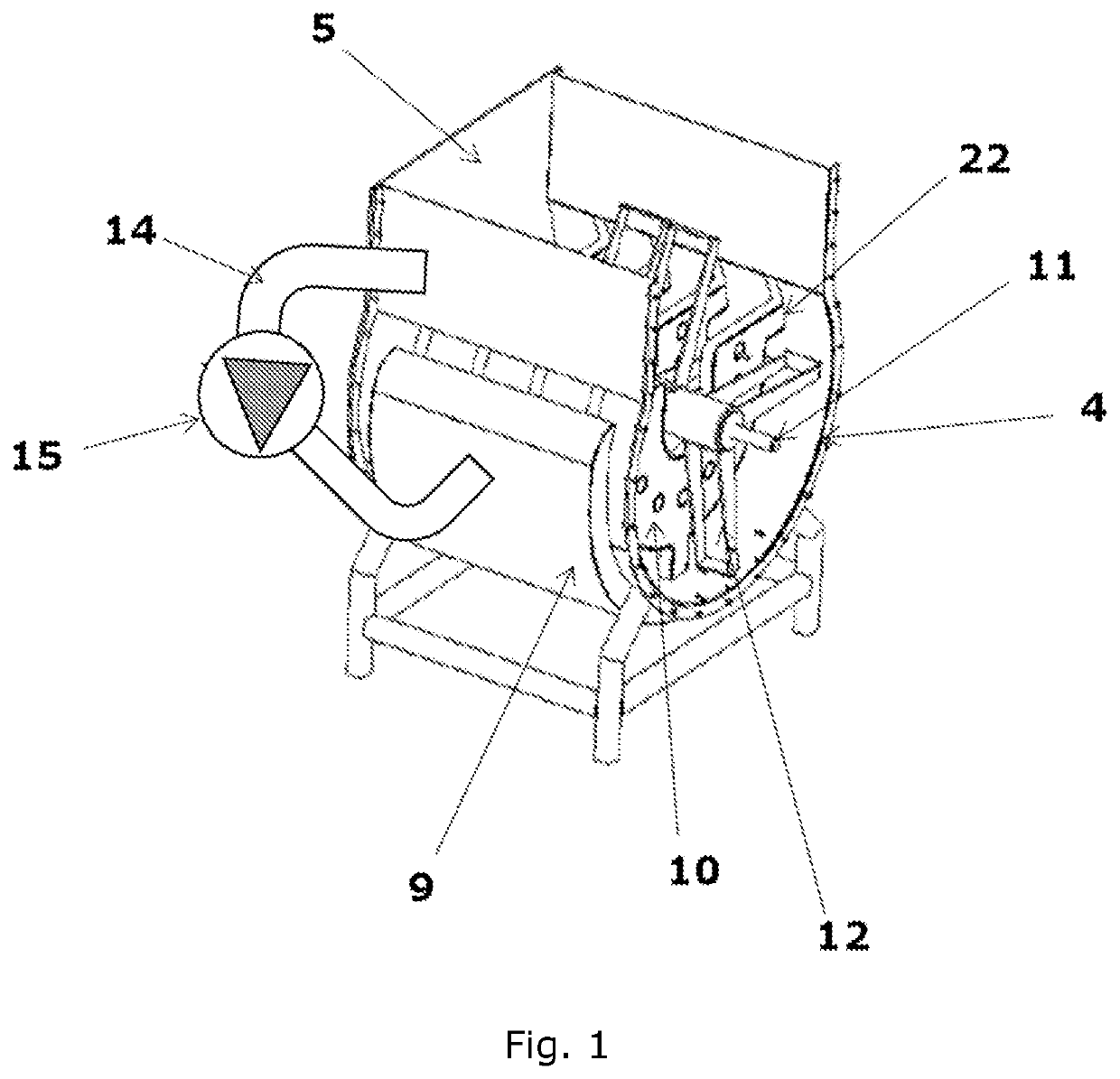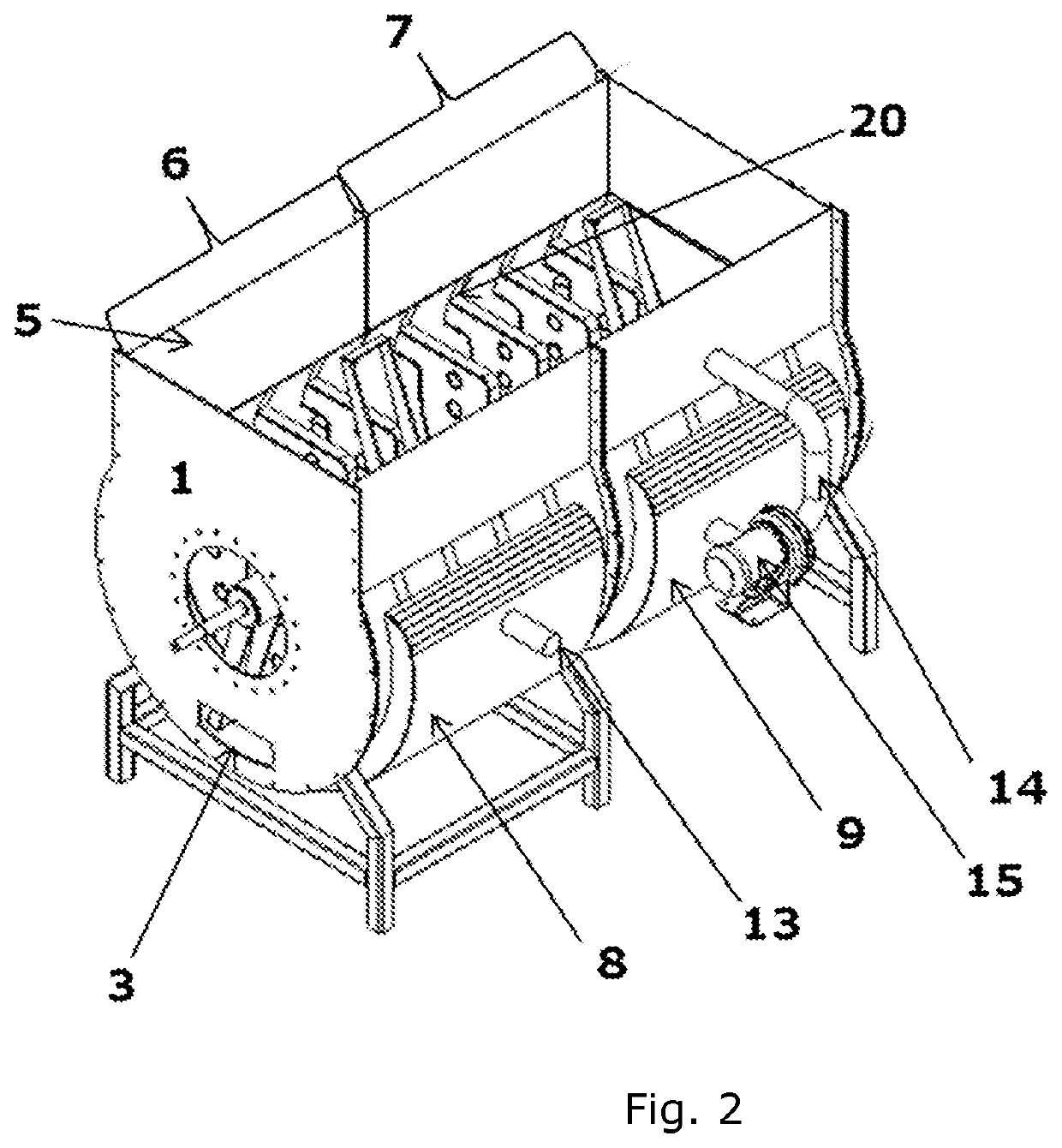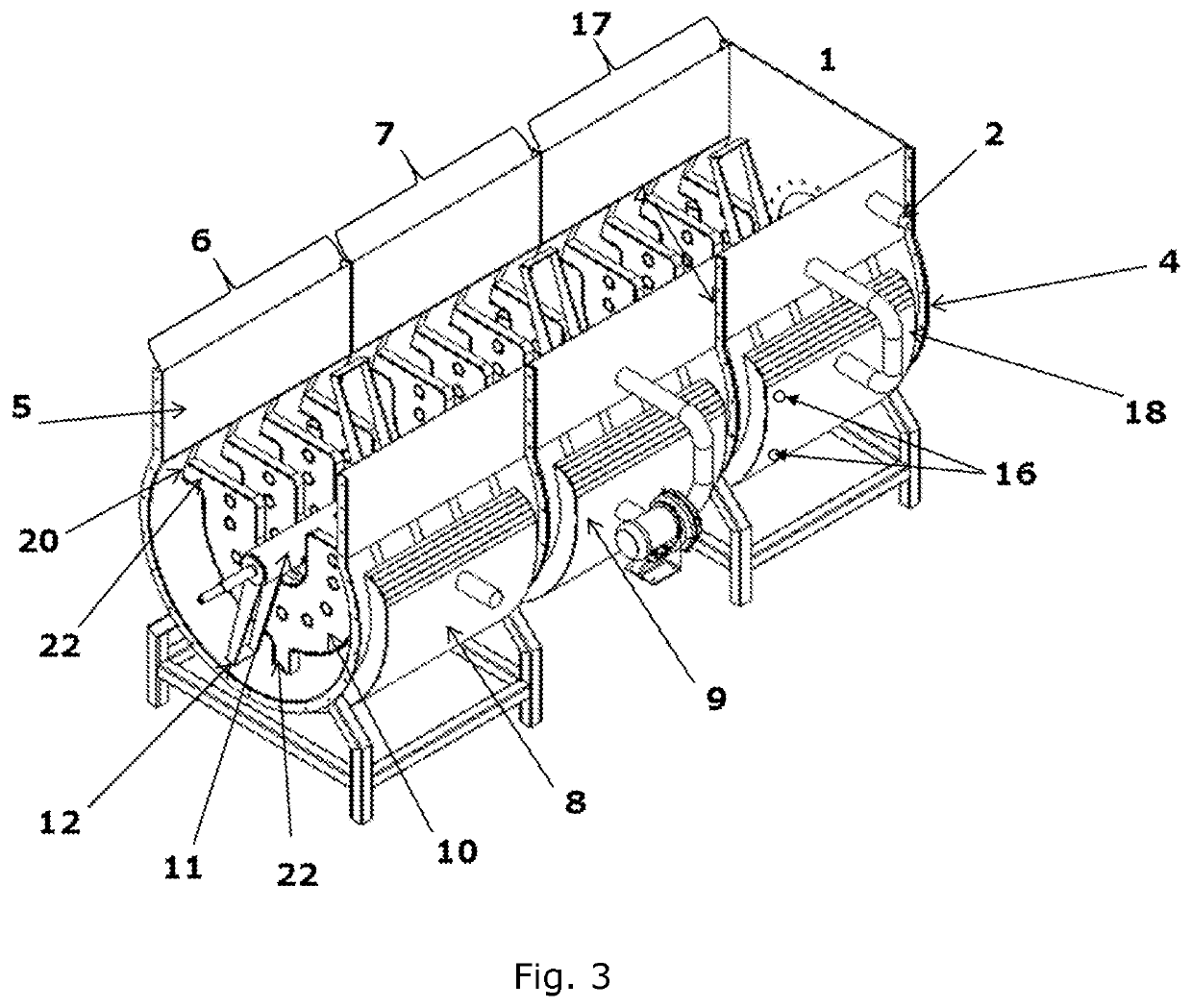Mechanical vapor recompression apparatus
a mechanical vapor and dryer technology, applied in lighting and heating apparatus, drying, energy-saving heating/cooling, etc., can solve the problems of insufficient scraping to prevent material build-up on the heating surface, difficult control of drying, continuous use, etc., to achieve fast cooking and drying process, simple and robust design, and large area
- Summary
- Abstract
- Description
- Claims
- Application Information
AI Technical Summary
Benefits of technology
Problems solved by technology
Method used
Image
Examples
Embodiment Construction
[0045]In the following, exemplary embodiments of the invention will be described, referring to the figures. The embodiments shown in the drawings are explained with reference numbers. These examples are provided to provide further understanding of the invention, without limiting its scope. The skilled person will understand that the drawings, described below, are for illustration purposes only. The drawings are not intended to limit the scope of the present teachings in any way.
[0046]In the following description, a series of steps are described. The skilled person will appreciate that unless required by the context, the order of steps is not critical for the resulting configuration and its effect. Further, it will be apparent to the skilled person that irrespective of the order of steps, the presence or absence of time delay between steps, can be present between some or all of the described steps.
[0047]FIG. 1 shows a simplified embodiment of the MVR function, where a dryer has a sin...
PUM
 Login to View More
Login to View More Abstract
Description
Claims
Application Information
 Login to View More
Login to View More - R&D
- Intellectual Property
- Life Sciences
- Materials
- Tech Scout
- Unparalleled Data Quality
- Higher Quality Content
- 60% Fewer Hallucinations
Browse by: Latest US Patents, China's latest patents, Technical Efficacy Thesaurus, Application Domain, Technology Topic, Popular Technical Reports.
© 2025 PatSnap. All rights reserved.Legal|Privacy policy|Modern Slavery Act Transparency Statement|Sitemap|About US| Contact US: help@patsnap.com



